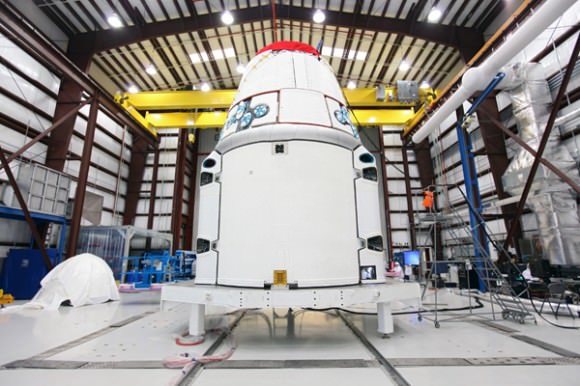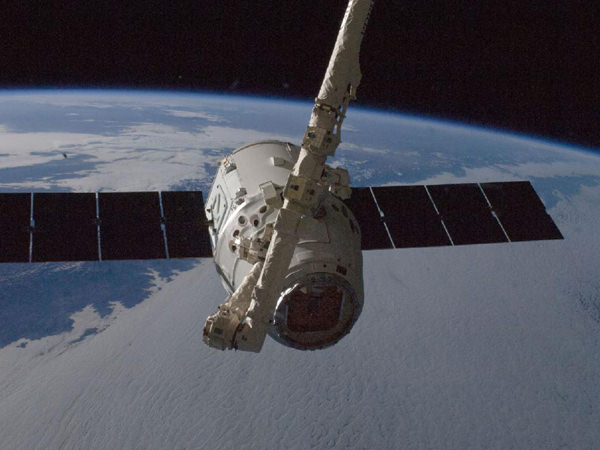SpaceX’s Dragon spacecraft may be appearing in a backyard sky near you this weekend. Scheduled to launch this Friday on March 1st at 10:10 AM Eastern Standard Time (EST)/15:10 Universal Time (UT), this will be the 3rd resupply flight for the Dragon spacecraft to the International Space Station (ISS). And the great news is, you may just be able to catch the spacecraft as it chases down the ISS worldwide.
The Space Shuttle and the ISS captured by the author as seen from Northern Maine shortly after undocking in June, 2007.
Catching a satellite in low Earth orbit is an unforgettable sight. Satellites appear as moving “stars” against the background sky, shining steadily (unless they’re tumbling!) in the sunlight overhead in the dawn or dusk sky. Occasionally, you may catch a flare in brightness as a reflective panel catches the sunlight just right. The Hubble Space Telescope and the Iridium constellation of satellites can flare in this fashion.
At 109 metres in size, the ISS is the largest object ever constructed in orbit and is easily visible to the naked eye. It has an angular diameter of about 50” when directly overhead (about the visual size of Saturn plus rings near opposition). I can just make out a tiny box-like structure with binoculars when it passes overhead. If the orientation of the station and its solar panels is just right, it looks like a tiny luminous Star Wars TIE fighter as viewed through binoculars!

But what’s even more amazing is to watch a spacecraft rendezvous with the ISS, as diligent observers may witness this weekend. Your best bet will be to use predictions for ISS passes from your location. Heavens-Above, CALSky and Space Weather all have simple trackers for sky watchers. More advanced observers may want to use an application known as Orbitron which allows you to manually load updated Two-Line Element sets (TLEs) from Celestrak or NORAD’s Space-Track website for use in the field sans Internet connection. Note that Space-Track requires permission to access; they welcome amateur sat-spotters and educators, but they also want to assure that no “rogue entities” are accessing the site! Continue reading “Spotting the Dragon: How to See SpaceX on Approach to the ISS This Weekend”

